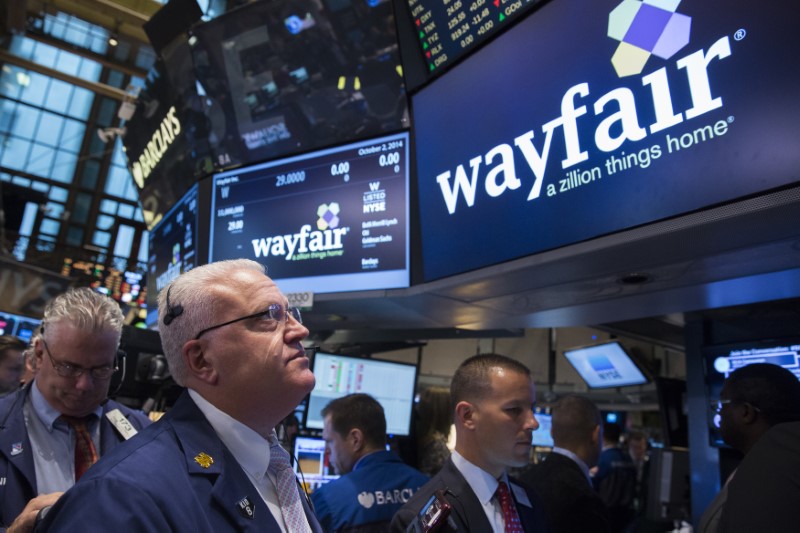Investing.com’s stocks of the week
By Sam Boughedda
Wayfair (NYSE:W) shares have jumped over 11% premarket Monday after analysts at JPMorgan and BofA upgraded the stock following last week's announcement that it has updated its cost efficiency plan, which includes cutting a further 1,750 employees.
BofA analysts double upgraded Wayfair to Buy from Underperform, more than doubling the price target on the stock to $65 from $30 per share.
They told investors in a note that the company is "running a leaner meaner house" and is outperforming the industry for the first time since COVID.
"We are now more confident that Wayfair will achieve breakeven or better EBTIDA this year (first time since 2020) on a significant improvement in revenue trends and over $1bn of expense reductions," they wrote. "Wayfair announced that it was implementing $1.4bn in cost cuts (from $500mn previously) and revenue trends improved each month in 4Q. Wayfair shares rose 20.3% on the news (vs.1.9% for S&P 500) but we see room for continued multiple expansion if Wayfair turns EBITDA positive this year."
Meanwhile, JPMorgan analysts also double-upgraded the stock to Overweight from Underweight, lifting the price target to $63 from $35.
They told investors that the tides have turned positive.
The analysts explained that the upgrade is due to a "positive shift in market share trends and management's newfound commitment to controlling expenses/investments, which combined, should cause a significant inflection in earnings revisions from steeply negative over the past two years to positive, on top of still-attractive valuation."
"Despite the movement on Friday following W's unexpected pre-announcement into a highly favorable tech tape, we still see significant upside to valuation," they added.
Elsewhere Monday, William Blair analysts maintained an Outperform rating on Wayfair, stating, "the company has now identified more than $1,400 million in cost savings, nearly triple the $500 million previously targeted."
"The realization of the total savings identified may be partly offset by the company reinvesting its product and operational efficiencies into lower prices as inflation-weary consumers increasingly seek opportunities for value," they explained.
